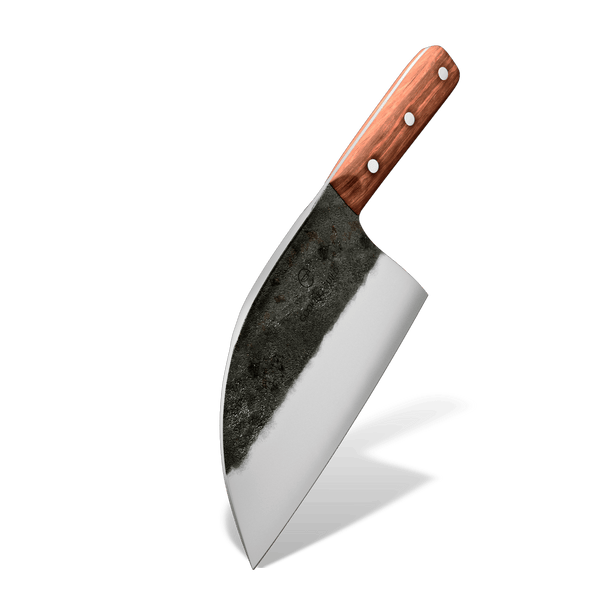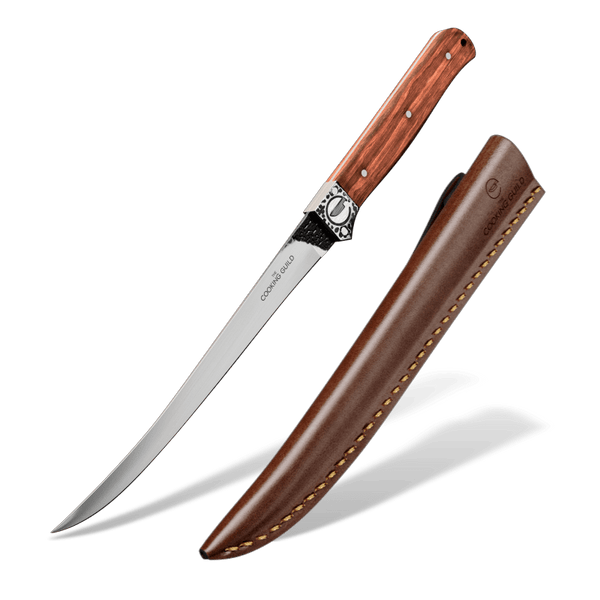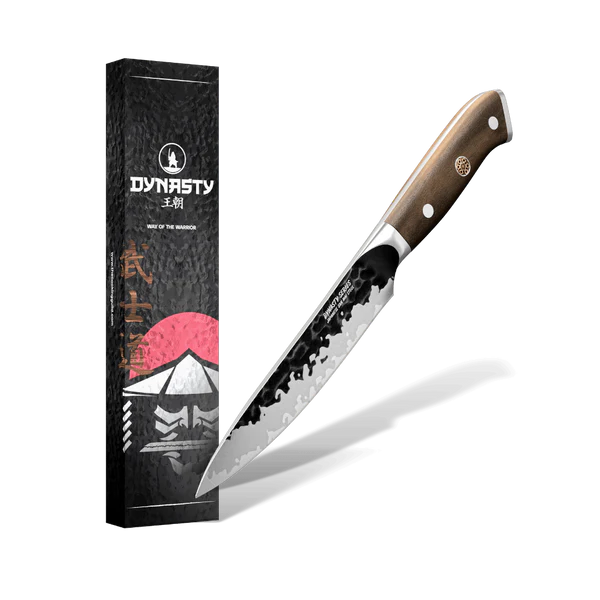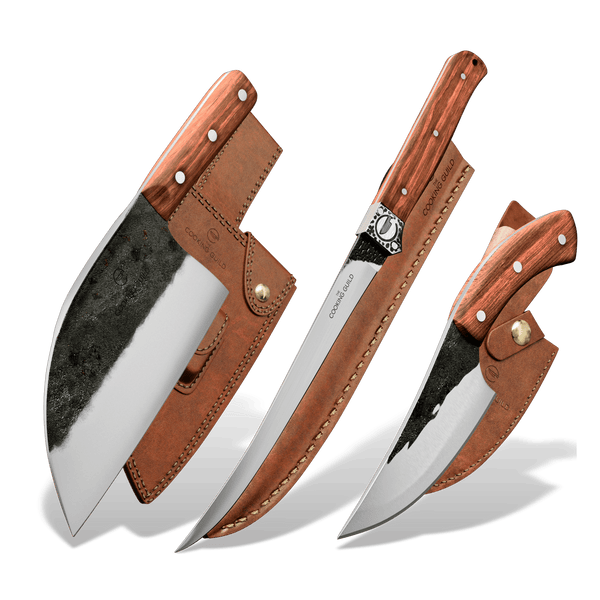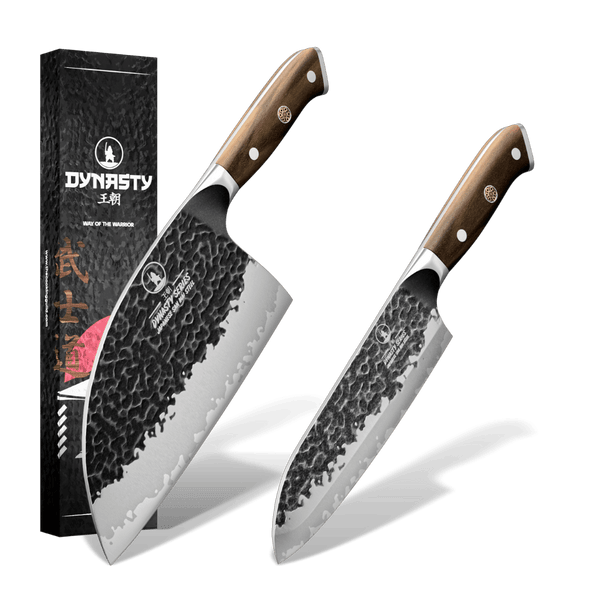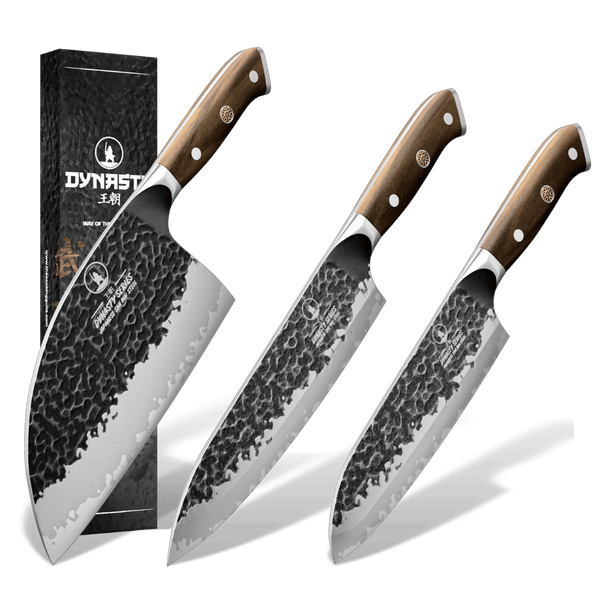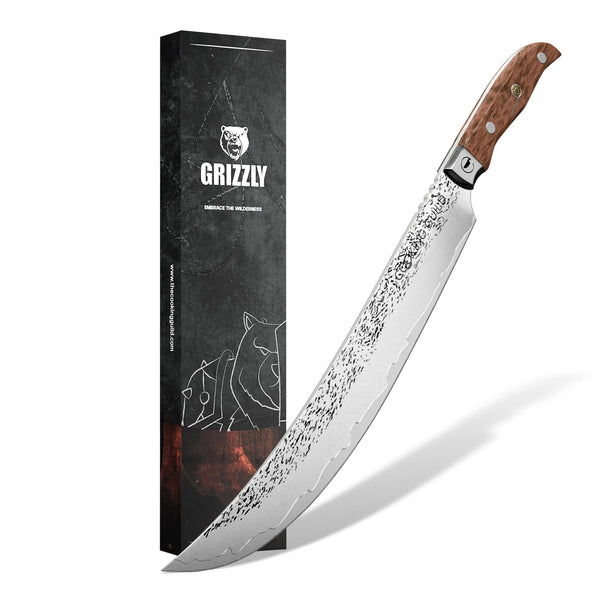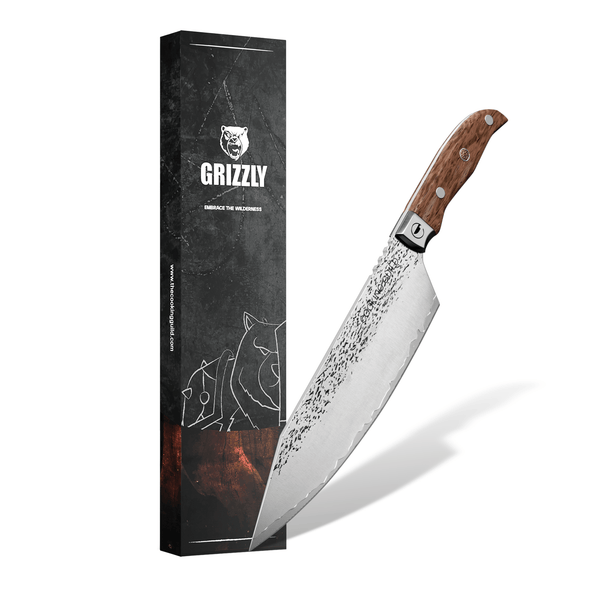What defines the "best" there is? The best defines any item to be the most excellent, practical, and desirable among the rest. They are made with the finest quality, mainly to the highest degree possible.
What Is The "Best"?
The "best" is used on any item the majority considers the most outstanding among its fellow group, and this falls from the quality and performance of the material to the tool used in daily activities.
On Metallurgy And Marketing
In the field of metallurgy, “the best steel” is often used in determining the quality of materials and the process it has undergone. Metal forging uses prime raw materials, specialized techniques, and industrial standards. Achieving the best also involves optimizing the converted material to reach peak conditions and specifications.
On the other hand, in marketing, what defines "the best" is influenced by various factors. Specifically, the focus on effective marketing strategies, target audience preference, and marketing goals have broadened the term of what is "the best." Marketing industries tend to use "the best" as a term for selling their products and generating customer satisfaction.

Most Popular Steels For Kitchen Knives
Steel is one of the most common materials for making quality kitchen knives. These metal alloys are made of various components to provide sharpness, strength, and durability.
To make quality knife blades, various steel types are used. A range of different steels have their own properties, catering to specific needs and preferences. Below are the different kinds of steel that are popular for knife makers.
AUS-6
A type of stainless steel. It is known for its corrosion resistance and provides ease of sharpening, which is often used in budget-friendly kitchen knives.
AUS-8
Similar to AUS-6, what makes AUS-8 slightly different is having a somewhat better retention. Combining the steel’s resilience with its resistance to corrosion makes AUS-8 steel a common option for mid-range types of knife sets.
AUS-10
AUS-10 offers improved hardness and edge retention compared to AUS-6 and AUS-8. They are used in developing knives with the capability of staying sharp for a longer amount of time.
VG-MAX
VG-Mac are high-quality steel types also known for possessing excellent sharpness and retention. They are one of the few steel variants used in making premium knives.
X50CRMOV15 / Krupp 4116
Another alternative type of stainless steel that offers food resistance towards corrosion and is often used in affordable, entry-level knives.
420J Stainless
Compared to the previous mentions, 420J Stainless steel is known for easy maintenance. However, they lack edge retention in contrast.
440a/440c
These types of steel are known to offer decent resistance and edge retention, making them another common option in designing mid-range knives.
Cronidur 30
A high-end type of steel that also provides exceptional corrosion resistance and resilience. Like VG-MAX steel, they are popular in premium knives.
1.4116
A versatile type of steel that provides a good balance of resistance. These types of steel are famously found in Swiss Army knives, a range of cutlery, and specialized tools, such as scalpels.
Cromova 18
Cromova 18 is a type of steel known for its high chromium content. The chromium content is the component that enhances the steel’s resistance and sharpness. They have a unique composition of carbon, molybdenum, and vanadium.
Friodur
Friodur steel is a unique type that is known for the remarkable heat treatment process the steel has undergone. The heat treatment process results in Friodur steel developing harder and more resistant knives.
Sandvik 12c27 And 14c28n
The 12c27 and the 14c28n are popular types of steel under the Sadvik family. They are both popular among knife makers due to the quality both steels provide. The difference between the two is that 14c28n is considered to have additional nitrogen and amount of carbon compared to 12c27. Both steel offers superior hardness, corrosion resistance, and retention.
Tool Steel
Tool steel is a different variation of carbon steel and steel alloy, commonly used for everyday tools and shaping other materials due to their lasting durability and resilience.
What We Like And What We Don’t Like
As fellow knife enthusiasts and experts in quality metal, there are pros and cons to every type of steel used in making excellent kitchen knives. In addition to the positive and negative factors different steel types bring, how they are forged is also a factor that affects what we like and don’t like about the varying steel.

Carbon Steel
Carbon steel is commonly composed of carbon content with the highest concentration of 2 percent. The carbon composition will be mixed with iron and other types of metals, depending on which one the bladesmiths choose. These materials may include nickel, cobalt, tungsten, titanium, zirconium, carbide, or any other alloy.
Composition
Carbon steel is commonly composed of carbon content with the highest concentration of 2 percent. The carbon composition will be mixed with iron and other types of metals, depending on which one the bladesmiths choose. These materials may include nickel, cobalt, tungsten, titanium, zirconium, or any other alloy.
Properties
The properties usually consist of an average of 1.5% carbon. The main property of this steel makes it the least ductile with the highest hardness and toughness compared to other steel. Carbon steel is also known to have wear-resistance properties.
Manufacture
Manufacturing carbon steel involves melting the iron ore at a very high temperature in the presence of oxygen. Upon being melted, it can undergo steelmaking by different approaches, which can either be an oxygen process or a furnace.
What We Like And What We Don’t Like
What we like about carbon steel is that upon forging it right, it can be a valuable material in making good and sharp knives. The materials used are hand-picked for what they offer on the blade. What we don’t like about carbon steel is that if not made properly, it can be brittle and can be damaged under stress. However, if properly made, it is also too strong to work with, making it difficult to forge and create knives. Additionally, the steel is more vulnerable to rust and corrosion.
Carbon Steel Types
Carbon steel is categorized into different types: Low carbon or mild, with a carbon composition of 0.05 to 0.25%; Medium Carbon, with a composition of 0.26 to 0.60%; and High Carbon, with a composition of 0.61 to 1.50%.The steel has branched out into different variations. Most notably, high-carbon steels are the preferred choice for chefs, resulting in a variety of steel types, which include:
Blue Paper Steel (Aogami)
Aogami is a type of steel commonly found in Japan, the name translates to “blue paper”, and as such, is popularly known as “Blue Paper Steel.” They are considered very pure due to being taken from iron-rich river sands and carbon alloys.
White Paper Steel (Shirogami)
Shirogami is another type of Japanese steel that can be sharpened to an exceptional edge. Their name translates to “white paper, " nicknamed “White Paper Steel.” made with small amounts of impurities that give knives an excellent edge.
Yellow Paper Steel (Kigami)
Kigami, like the two previously mentioned steels, descends from Japan. It is known as “Yellow Paper Steel” and contains only a few impurities. Yellow Paper Steel is commonly used for saw blades and kitchen knives.
Japanese Steel (Nihonko, Hagane, Virgin Carbon Steel)
Japanese steel is a type of carbon steel that is popular in making traditional knives. They are commonly known as “Nihonko” or “Hagane” and have high carbon content. Traditional forging methods of using prime iron sand and charcoal are used in making the steel. During this early stage is the steel, also called “Virgin Carbon Steel,” which holds fewer impurities and displays excellent sharpness and hardness qualities.

Stainless Steel
Stainless steel has excellent formability and, as they are named, due to their strong stain resistance. They are widely used in various applications, such as affordable kitchen cutlery. Its corrosion resistance ensures no flavors or leftovers from previous ingredients linger within the blade.
Composition
The composition of stainless steel commonly consists of iron and chromium, contributing to the steel’s corrosion-resistant qualities. The steel also comprises elements such as molybdenum, nickel, carbide, and carbon. Carbide and carbon both play a role in developing hardness.
Properties
The steel is unique for having several properties. As mentioned earlier, one of its most popular properties is its corrosion, rust, and staining resistance. Another notable property is the steel’s durability and resilience. Their strength and durability make them highly resistant to physical stress over a prolonged period and withstand extreme temperatures. The steel’s robust ability makes it highly popular for various industrial kitchen utensils.
Manufacture
Manufacturing stainless steel usually involves transforming specific raw materials into the alloy we commonly know and use. The raw materials commonly consist of iron ore, chromium, and other elements such as nickel, carbide, and sulfur for controlled brittleness. Upon collecting the required raw materials, they are separately refined through a smelting process. Afterward, the process combines the materials, melting them at extremely high temperatures and casting them into different shapes, such as a blade.
What We Like And What We Don’t Like
Stainless steel is favorable for several reasons. Their corrosion and stain resistance makes them hard to corrode and easy to clean. Blades made of these steels are resilient and durable, making them useful in tackling kitchen work over long periods. In contrast, the steel is unfavorable because it is costly and requires frequent cleaning to maintain its appearance.
Stainless Steel Types
Different applications often use various stainless steel types, each possessing its distinct set of attributes.
SG-2 (Super Gold No.2)
SG-2 are high-end steels that provide knives with high-quality sharpness and edge retention. They are frequently used for prime sets of knives due to the steel providing the balance between being sharp and durable.
VG-10
Another high-quality steel alloy that is recognized for its excellent retention and its ability to resist corrosion. Like the SG-2, the VG-10 is also used in making high-quality kitchen knives.
VG-1
Like VG-10, they are also a type of quality stainless steel alloy. However, they are slightly more affordable and popular in a wider range of knife applications.
Gingami No.3 (Gin-san)
Gingami No. 3 is fine-grained steel that is highly compared to high-carbon steel. Gingami No. 3 is very popular with many professional chefs, making it easier to sharpen steel.
Sweden Stainless Steel
These are a broad category that focuses on stainless steel variants that are produced in Sweden. They are well-regarded for their high quality and are used in various applications.
Molybdenum Vanadium Stainless Steel
These are stainless steel variants that implement specific elements of molybdenum and vanadium. The use of the two elements enhances the steel’s strength and resistance.
Powdered Steel
Powdered steel, or PM steel, is known to be an alternative to conventional steel due to the properties that high-speed steels and super steel variants cannot provide. The metal is produced through a specialized process of turning molten steel into fine powder components.
Powdered metallurgy steel offers different benefits for the knives. The most significant being its hardness. Knives made from this steel score high on the Rockwell hardness rating, known shortly as HRC, resulting in the knives retaining a sharp edge over a prolonged period. The latest research has estimated that knives made from powdered steel range around 59-60 HRC.
Powdered steel possesses an additional noteworthy trait in the form of its finely and uniformly structured grains. Furthermore, it elevates the blade's capacity to acquire and sustain an exceedingly sharp cutting edge.
Composition
Powdered steel is composed of metal particles that are finely grounded. Iron or steel alloys are the usual source, often mixed with small amounts of other alloy elements. The composition also varies depending on the desired result.
Properties
Powered steel exhibits several beneficial properties. The most common are exceptional strength, wear and tear resistance, and maintaining tolerance during production and continuous use.
Manufacture
Manufacturing powdered steel involves a specialized process. This process begins with the selection of metal materials. The options are numerous, but it is important to select the materials properly.
After the selection process, these materials will be converted into metal powder, which can be done with different methods. Common methods include:
- Solid-state reduction;
- Atomization;
- Chemical; and
- Atomization.

Damascus Steel
Damascus steel is highly regarded as a solid steel alloy that provides excellent resilience and sharpness to any knife blades. The steel is famous not just for its component’s strength but also for displaying a unique wavy, watery pattern within the finalized form.
Composition
The materials used in making Damascus are different mixes of high-carbon steel and nickel-alloyed metal. The components are multi-layered and stacked together. The finalized steel is estimated to measure around 60-63 HRC.
Properties
Damascus offers several unique properties that fit both in function and aesthetics. Historically, bladed weapons and tools made of Damascus tend to provide superior performances and maintain keen edges. The steel is also hard and flexible, making it last a lifetime.
Manufacture
Manufacturing Damascus is a broad approach, as the original methods were lost in history. Modern technology and approaches have made several efforts to make steel that closely resembles the original in performance and appearance.
Both methods involve stacking the needed elemental components over one another and welding them together. Then, the wielded components are heated and flattened. Then, it will undergo a repeating process of folding and hammering. The steel is tempered to improve its strength and durability. The last process involves etching the patterns out by immersing the steel in a diluted solution for a specific time.
Top Options
Many steel options are perfect for providing high-performing and unique kitchen knives. All steel options can fit any specific needs and preferences of different chefs and food preparation. Damascus and Carbon steel knives are perfect for precise cuts and long-lasting performance in strength, sharpness, and aesthetic appeal.
Non-stainless
Although used for high-quality knives, both Carbon and Damascus steel are prone to corrosion and stains if improperly maintained. Proper care is needed when considering taking knives that use steel as materials for the blades.
Very Good Options
Tools and Stainless steel are still good options. These steel are perfect for making good-quality knives that are made to last over a lifetime with proper care. Additionally, both steels are good and functional for more affordable knives.
Stainless steel knives are even considered as one of the more affordable options within the market.
Average Lower Options
Steel options can differ depending on what people want in their knives. They may either look for high-performing knives or affordability without hindering performances within the kitchen. The range of steel types offers unique strengths and weaknesses, so average or lower options are not recommended.
Special Category
In terms of selecting the right knife for your needs, it is essential to set up your categories in comparison for a complete idea. Special types in comparing the suitable knives should include:
- The hardness of the metal the knife is made of;
- The knife’s level of resistance to corrosion;
- The knife’s ability to maintain its sharpness and good edge over time;
- The knife’s durability and
- The cost and affordability of the knife.

Knife Steel Comparison: Which Is Best?
For individuals looking into the deeper aspects of comparing which knives are better, each knife blades has been placed with different steel components to the test. Here are a few overviews in comparing different steel knives in their performance.
AUS-10 Vs VG-10
AUS-10 and VG-10 are both prime steel that leaves no doubt in providing good-performing knives.
In terms of composition, the VG-10 steel holds superior hardness and corrosion resistance. Additionally, the VG-10 can retain its sharp edge through continuous use. The AUS-10 steel also performs well, with its benefit being less expensive than the VG-10.
VG-10 Vs SG2
Comparing the two steels, the SG2 steel takes the advantage of having better edge retention alongside the convenience of easy sharpening. The VG10, on the other hand, is more versatile. The steel is also both lighter and cheaper in comparison to the SG2.
VG-MAX Vs VG-10
The VG-MAX Steel is the enhanced version of the VG-10, meaning that the VG0MAX offers similar benefits to the VG-10 at an improved level. It provides an exceptional edge and sharpness.
440A Vs 440C
It is known that both the 440A and the 440C steels are used in budget-friendly knives. However, the 440A steel is tougher and has a higher edge stability than the 440C. The 440A steel is suitable for everyday kitchen utensils.
Elements Of Steel
Steel is versatile, from construction materials to essential kitchen tools. It is known to provide excellent strength and durability, making them vile components for long-lasting applications. The properties of steel are altered over time and improved in its quality. Here is a brief overview of some critical elements that are added to steel for better results:
Carbon (C)
Carbon is the primary and critical element that is mixed into steel. The aspect provides enhancements that improve the steel's strength and hardness.
Chromium (Cr)
Chromium is an element that enhances the steel’s resistance to corrosion and oxidation exposure, which helps steel alloys perform even under exposure to the elements. These elements are one of the main components of Wusthof steel variants.
Molybdenum (Mo)
Molybdenum is the elemental component that improves the steel's strength and high-temperature stability. The element plays a role in building the steel's resistance to extreme conditions.
Nickel (Ni)
Nickel components are common additions due to their improvements over specific factors within the steel, including improving corrosion resistance, toughness, and flexibility.
Tungsten (W)
Tungsten is added for its ability to maintain strength and hardness under high temperatures, which helps steel perform under high-temperature applications.
Vanadium (V)
Vanadium contributes to the steel’s hardness, wear resistance, and grain refinement, which is commonly used in tool steel components due to how hard the steel is made.
Iron (Fe)
Iron serves as the base metal within steel. Iron passes down specific properties, such as its high strength and heat resistance. Iron is another central element that is needed in producing steel.
Cobalt (Co)
Cobalt improves the steel’s magnetic properties and wear resistance. It’s frequently used in making magnets and special-purpose steel.
Phosphorus (P)
Phosphorus is an element that provides an adverse effect in excessive amounts. They make the steel brittle if not implemented properly.
Sulfur (S)
Sulfur is another harmful element that, if not implemented properly, can lead to brittle properties within the steel.
Manganese (Mn)
Manganese is an element that also improves steel's strength and weldability. These elements are added to counteract the adverse effects of sulfur and phosphorus content within steel.

What Are The Properties Of Steel?
Steel offers different sets of benefits due to its exceptional properties, including:
Strength
One of the most common and notable properties of steel is that the levels of strength of steel are significant and can help the metal withstand heavy loads and high stress. Its strength is one of the most favored factors, making steel suitable for various applications and tools.
Toughness
The toughness of steel exhibits its ability to withstand stressful situations and absorb energy without damage or fracture easily. This property is still nearly resistant to impacts and sudden force. The toughness is the result of mixing beneficial elements such as carbide.
Hardness
Steel hardness is perfect for retaining the steel’s quality and composition. The hardness can vary depending on how the steel is composed and treated. High carbon steel, for example, is exceptionally hard, which makes it suitable for perfect cutting tools.
Rust Resistance
Steel is known to develop resistance to specific conditions such as rust or corrosion, making it ideal for knives that are easy to clean and maintain without worry of stains.
Blade Geometry
The steel’s hardness and material grant the ability to retain the blade’s geometry and cutting ability, which helps the blades cut properly, maintain sharpness, and resist wear over a long period.
Japanese Steel Vs. German Steel
Japanese steel is a renowned type of steel, often celebrated for providing knives made with exceptional craftsmanship and precise performances. The steel is characterized by its high carbon content, enabling it to attain edge retention with extreme sharpness.
In contrast, German steel is known for providing quality durability and resilience within the knives. German blades, such as Zwilling knives, are known to be thicker and heavier. This build makes the knives well-suited for handling heavy-duty tasks and preparations.
Blade Hardness
The hardness of the blade plays a factor that affects the knife's performance and longevity. Usually measured on the Rockwell Hardness Scale, this measures the blades’ ability to resist deformation, chipping, or wearing down during use.
Best Chef’s Knives
A chef’s knife is the signature tool in every kitchen. They are the chef’s go-to tool for cutting and preparing different ranges of ingredients. Selecting the best knife also understands its versatile role. Here are our recommendations for the best knife selections:
Best Overall - Nomad Series Chef Knife

The Nomad Series Chef Knives display the beauty of eye-catching aesthetics and incredible features. Hand-forged using X70Cr17Mov Stainless steel, the knives offer excellent retention quality sharpness. These knives can effortlessly cut through any ingredients with ease. The Nomad Knives are exactly what you want regarding the best overall quality.
Best Value - Dynasty Series 8" Chef Knife

Affordability doesn’t entirely tell the tale of a knife’s quality. Our Dynasty knives are forged using ancient San Mai techniques using AUS-10 steel alongside 430 stainless steel. These knives are made to remain sharp and last for a lifetime. The Dynasty Series Chef Knife is the perfect match for those looking for good value and quality in their knives.
Best High-end Chef’s Knife - Nomad Series Chef Knife

The Nomad Series Chef Knives are designed for quality and performance. The mountain–range patterns etched to the blades and the burl wood and sea epoxy handle match the knives' outdoor and high-end aesthetics.
Best Durable - ONYX Damascus Steel Chef Knife

The ONYX Steel Knife offers high durability and performance in use. Made with high carbon Damascus steel and paired with a full tang Ebony wood handle, the ONYX knives perfectly fit the balance of strength, sharpness, and beauty. Its components and forging process make the ONYX Damascus Chef Knife the most durable.
Best Lightweight - Dynasty Series 8" Chef Knife

The Dynasty Series Knife is made to be light. These knives are made to fit a wide range of kitchen tasks and elevate your culinary experience. The Dynasty Series Chef Knife adopts the process of forging Japanese knives, famous for developing light knives.
Best Splurge - Nomad Series Chef Knife

When it comes to spending your money on the perfect knife, the Nomad Series Chef Knife offers qualities that make buying the knife worth it. The Nomad Series knife offers both eye-catching elements alongside excellent cutting precisions.
Best Japanese-style Chef's Knife - Nomad Series 7" Bunka

If you are looking for a chef’s knife that fits Japanese aesthetics, the Nomad Series Bunka offers what you want in a quality knife. The Nomad Series Bunka are popular in slicing many ingredients, making them an all-around tool.
Best Less Expensive Japanese-style Chef's Knife - Dynasty Series Santoku Knife

Besides the Nomad Series Bunka, this knife is another popular recommendation. The Dynasty Series Santoku is a general-purpose knife made to be thinner yet harder in delivering precise slicing and cutting toward any ingredient.
Best Chef's Knife For Beginners - Dynasty Series 8" Chef Knife

The Dynasty Series Chef Knife is perfect for first-time chefs and beginners. The knife is well-rounded in different culinary tasks. The craftsmanship used in designing these knives is made to last, perform excellent cuts, and possess wear resistance over time.
Best Less Expensive Chef's Knife For Beginners - Hand-Forged Chef Knife

For those looking for a good performing knife at an affordable range, the Hand Forged Chef Knife is crafted to be perfectly balanced. This knife is forged with a 1095 High-carbon steel, making it extremely sharp and quick to work from slicing meat to chopping vegetables.
Best Balanced Chef's Knife - ONYX Damascus Steel Chef Knife

The Onyx Damascus Chef Knife possesses several qualities and benefits, making it the best-balanced knife any chef could hope for. It takes almost a year to develop this blade to perfection, providing the balance chefs look for in their knives.
Best Less Expensive Balanced Chef's Knife - Dynasty Santoku

Who says the perfect knife has to be pricey? The Dynasty Series Santoku fits the perfect categories of affordability and balanced quality. This knife offers a blade that is resistant to rust and the sharpness to cut without effort, all thanks to staying true to its San Mei forging roots.
Best Super-small Chef's Knife - Nomad Series 7" Bunka

The Nomad Series Bunka has a straight-edged blade and a sharp, triangular tip, making the knife a precise cutter and suitable for taking culinary roles. Possessing a blade length of only 7 inches makes the knife maneuverable and lightweight.
Best Chef's Knife For Utility - Dynasty Paring Knife

Designed to be light, sharp, and portable, the Dynasty Paring Knife can be utilized in any culinary role within the kitchen. This knife is the go-to option for peeling, slicing, dicing, and shaping whatever ingredient you have on the chopping board.
Best Chef's Knife For Vegetables - Nomad Petty Knife

The Nomad Series Petty Knife is what you need for an effortless approach. The knife is designed to be compact with a razor-sharp blade, which is ideal for peeling and slicing ingredients. This knife is a must-have for chefs all around.
Best Chef's Knife For Kids - Hand-Forged Petty Knife

The Hand Forged 5” Petty Knife is designed for young chefs. A heavily requested item, this knife is hand forged from high carbon steel, fitting strength and precision with usability comfort.
Knife Tests
Well-forged knives are not just for show. Upon proper finishing, these ranges of kitchen knives will be put on different tests. These tests are designed to test the knives’ sharpness, edge retention, and durability.
Paper Test
The paper test is a simple examination commonly used to assess the blade’s sharpness. The knife would be used to effortlessly slice through a piece of paper. The cut will be used to determine how straight and clean the slice is. This test also assesses how the blade performs under different levels of effort the wielder puts into cutting. A straight and effortless cut should indicate that the knife passes the sharpness factor.
Vegetable Tests
The paper test is a simple examination commonly used to assess the blade’s sharpness. The knife would be used to effortlessly slice through a piece of paper. The cut will be used to determine how straight and clean the slice is. This test also assesses how the blade performs under different levels of effort the wielder puts into cutting. A straight and effortless cut should indicate that the knife passes the sharpness factor.
Factors To Consider
The perfect kitchen knife is important as it is designed to perform well in the kitchen and last
a lifetime with proper care. Understanding certain factors around knives is necessary to know the knife’s quality, components, and properties. Here are some factors you should consider when looking for your preferred knife.
Weight
Kitchen knives should have the perfect balance between light and heavy to provide precise cuts and slices over different ingredients. A good knife’s blade should weigh around 345 grams.
Blade Length And Style
Kitchen knives tend to vary in different sizes and styles. They can range from small knives to peel fruits or big cleavers to tackle thick cuts. You should know the length of the blade and what style you are looking for a quality performance within the kitchen.
Types Of Steel
The most important factor to consider when choosing a knife is the type of steel it is made of. Knives can be made of different steel, giving the pros and cons. Some steels vary in terms of resistance, sharpness, and durability.
Balance
When looking for a kitchen knife, it is essential to assess its balance. It would help if you looked for a knife that provides a balanced weight to reduce fatigue during prolonged use.
Heat Treatment
You should be aware of the heat treatment the knife has undergone. Heat treatment is an important process that affects the blade’s hardness, durability, and retention of its edges. A properly heat treated knife results in resisting damage and maintaining sharpness over time.
Geometry
The geometry of the knife is another important factor to be considered. You should assess the blade’s geometry, such as the edge’s shape, thickness, and grind. Knives take on different shapes to excel at different tasks. Knowing what culinary tasks you need the knife to perform is best.

Frequently Asked Questions
Here are some Frequently Asked Questions regarding the Chef’s Knives and the steel components within the knives.
What Is Steel?
Steel is a metal alloy that is popular and critical in making different sets of knives. These alloys are known for their strength and durability. Due to its benefits, steel is a fundamental material in making quality knives.
What Is The Best Steel For The Sharpest Knife?
Different steel types offer their unique pros and cons. It depends on what kind of knife meets specific needs. Carbon steel is often preferred due to its ability to retain its sharpness and durability.
What Steel Are Cheap Kitchen Knives Made Of?
Cheap kitchen knives are commonly made from stainless steel or low-carbon steel. The steel materials are affordable and can be mass-produced, making the knives cheaper.
Is A2 Steel Good For Knives?
A2 steel is known to possess exceptional toughness and wear resistance. These steel types are good for heavy-duty tasks and require maintenance to prevent corrosion. A2 steel is a suitable component for knives.
How Is Steel Graded & Classified?
Steel undergoes classification according to different criteria, such as the amount of carbon, toughness, and the presence of alloying components. Specific numerical or nominal designations identify typical categorizations.
What If The Steel Is Not Listed?
Suppose the steel used in the knife is not listed. In that case, contacting the manufacturers or visiting their official websites for direct details regarding this specific type of steel is recommended. It is important to know the steel composition to determine and estimate the knife’s performance.
What Is The Difference Between European- or Japanese-Style Knives?
European-style knives, such as German steel knives, are known to have thicker and heavier blades. They are more robust and are suitable for various culinary tasks. In contrast, Japanese knives are often thinner and lighter, designed to provide precise cuts and slices.
How Do You Use A Chef's Knife?
A chef’s knife is a versatile utensil used for various uses, such as chopping, slicing, and cutting through multiple ingredients. For proper use of this knife, properly grip the handle firmly and use the rocking motion to effortlessly slice through.
How Should You Sharpen A Chef's Knife?
In sharpening your knife regularly, it is recommended to use specialized sharpening stones for hands-on traditional approaches. Other recommended tools include honing rods or electric sharpeners.
How Do You Sharpen A Chef's Knife With A Stone?
In sharpening your knife regularly, use specialized sharpening stones for hands-on traditional approaches. Other recommended tools include honing rods or electric sharpeners.
How Do You Sharpen A Chef's Knife With Sharpening Steel?
Hold the steel vertically for sharpening methods using a honing rod or sharpening steel. Similar to using a sharpening stone, you need to draw the knife’s edge across the steel once on each side repeatedly. Continue this process until the knife is fully sharp.
How Should You Hold A Chef's Knife?
Hold the chef’s knife handle with a firm grip. The thumb and index should grip the blade’s base with the remaining fingers wrapped around the handle. This grip provides stability and balance upon using the blade.
